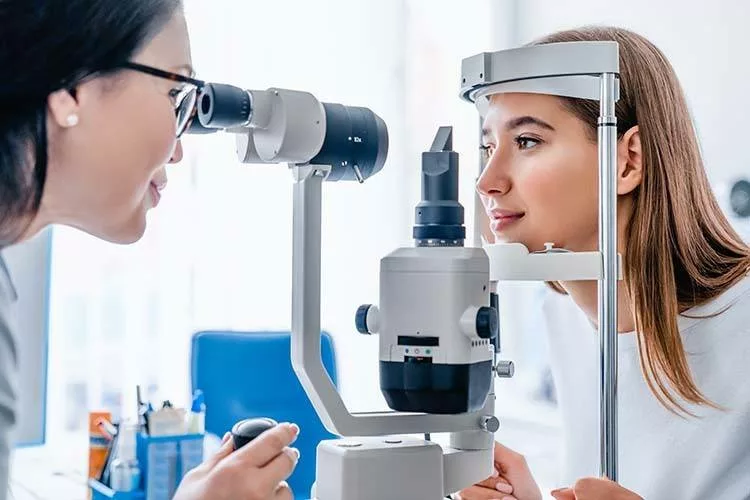
Ophthalmology, the side of medicine dedicated to the analysis, treatment, and prevention of eye disorders, has witnessed groundbreaking advancements in recent decades. From improved diagnostic technologies to minimally intrusive precise techniques, the field has evolved tremendously. However, with an aging global population and the increasing prevalence of eye 青光眼 like glaucoma, macular deterioration, and diabetic retinopathy, the demand for cutting-edge solutions hasn’t been greater. In this article, we explore the advancements in ophthalmology, the challenges that remain, and how the future of eye care continues to be formed by innovation and research.
One of the most notable advancements in ophthalmology is the development of sophisticated imaging technologies, which have revolutionized the way eye diseases are diagnosed and administered. Optical coherence tomography (OCT), for instance, provides detailed cross-sectional images of the retina, allowing ophthalmologists to detect early signs of diseases like glaucoma or macular deterioration. These non-invasive imaging techniques enable precise monitoring and early involvement, improving patient outcomes. The ability to see the structures of the eye in real-time has significantly enhanced the accuracy of analysis and the effectiveness of treatments.
Precise advancements in ophthalmology have likewise transformed patient care. Laser-assisted operations, such as LASIK and cataract surgery, have become increasingly common because of their precision and reduced recovery time. LASIK surgery, in particular, has offered a solution for millions of people suffering from refractive errors, such as myopia, hyperopia, and astigmatism. Similarly, innovations in cataract surgery, such as the use of femtosecond lasers and advanced intraocular contact lenses (IOLs), have dramatically improved visual outcomes for patients. These advancements reflect the growing increased exposure of patient comfort and personalized treatment approaches.
In addition to technological advances, the field of ophthalmology has benefited from the rise of pharmacological treatments. The development of anti-VEGF (vascular endothelial growth factor) treatments, for example, has been a game-changer for folks suffering from age-related macular deterioration (AMD) and diabetic retinopathy. These medications help alleviate problems with the development of vision loss by curbing the abnormal growth of blood vessels in the retina. The success of such treatments has provided a cure for millions and displays how pharmacotherapy can complement precise interventions in modern ophthalmology.
Despite these advancements, several challenges continue to affect the field. The growing prevalence of myopia, particularly among children and adults, is a significant public health concern. Studies have shown that environmental factors, such as increased screen time and reduced outdoor activities, contribute to the rise of myopia globally. This trend highlights the requirement for public health initiatives that encourage healthier eye habits and early interventions. Additionally, ensuring equitable access to ophthalmic care remains a pressing challenge in many parts of the world, particularly in low-income regions.
Glaucoma, often referred to as the “silent burglar of view, inch is another area where the field of ophthalmology faces ongoing challenges. This group of eye diseases, which damages the optic neurological and can lead to irreparable vision loss, often on without noticeable symptoms in its first stages. Although treatments such as eye falls, laser therapy, and surgery can slow the development of the disease, early prognosis remains crucial for protecting vision. Raising awareness about routine eye assessments and improving screening strategies to high-risk populations are critical to reducing the impact of glaucoma worldwide.
In respond to these challenges, ongoing research in ophthalmology is focused on developing new treatment strategies, including gene therapy and regenerative medicine. Gene therapy holds promise for treating inherited retinal diseases, such as retinitis pigmentosa and Leber congenital amaurosis, by introducing healthy copies of substandard gene history into retinal cells. Meanwhile, originate cell therapy and tissue engineering are increasingly being explored as potential treatments for conditions like macular deterioration and corneal injuries. These fresh approaches have the potential to revive vision in patients who already have got limited treatment plans.
The integration of artificial brains (AI) and machine learning into ophthalmology is another exciting development that could reshape the future of eye care. AI-powered diagnostic tools are increasingly being designed to analyze retinal images and detect early signs of diseases like diabetic retinopathy, glaucoma, and macular deterioration. These systems have the potential to enhance the efficiency of eye care by assisting ophthalmologists in making more accurate diagnoses and treatment decisions. Moreover, AI can help identify patterns in large datasets, potentially finding new information into the risk factors and development of eye diseases.
Telemedicine in addition has emerged as a valuable tool in ophthalmology, particularly during the COVID-19 pandemic. Remote services and teleophthalmology services have allowed patients to obtain care without necessity for in-person visits, which is especially beneficial for individuals in remote or underserved areas. While not all facets of eye care can be carried out remotely, telemedicine has proven effective for follow-up services, triaging emergency cases, and managing chronic conditions. The continued expansion of teleophthalmology could play a key role in addressing access disparities in eye care.
As ophthalmology moves forward, benefit of education and collaboration cannot be overstated. Ophthalmologists must stay up-to-date with the latest developments in the field to provide the best care for their patients. Professional organizations, meetings, and peer-reviewed periodicals play an important role in disseminating new knowledge and encouraging collaboration among eye care professionals. Additionally, patient education is essential for promoting protective eye care practices and encouraging individuals to look for timely medical assistance for vision problems.
In conclusion, ophthalmology is a rapidly growing field that has made tremendous strides in improving the analysis and treatment of eye diseases. While technological and pharmacological advancements have enhanced patient outcomes, significant challenges remain, particularly regarding access to care and the rising prevalence of eye conditions like myopia and glaucoma. Ongoing research, innovation, and collaboration will be key to overcoming these obstacles and ensuring that future generations benefit from even more effective and equitable eye care. The future of ophthalmology holds immense promise, offering a cure for millions around the world who depend on their vision for a better quality lifestyle.